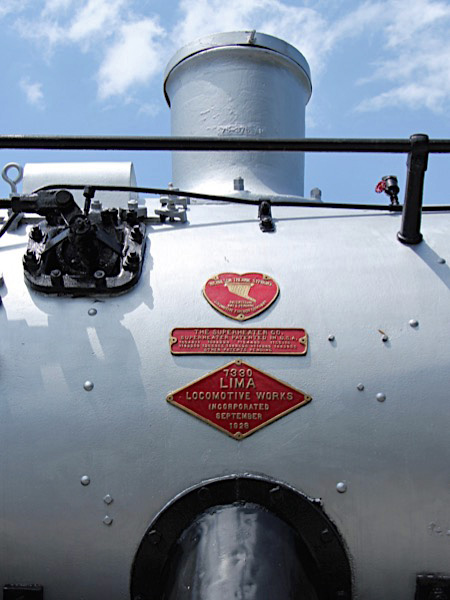
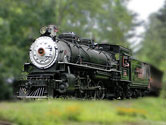






National Museum of Transportation

Jun 2018 / RWH

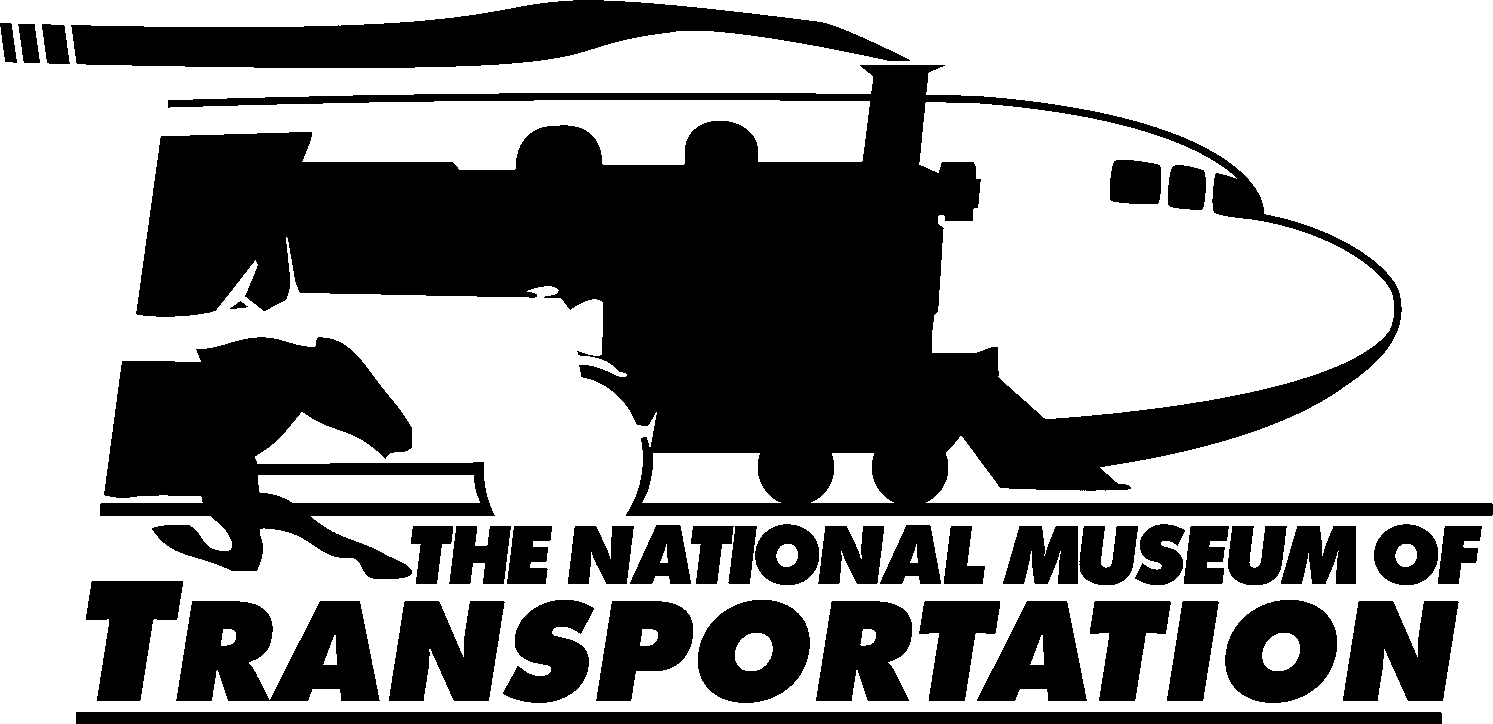
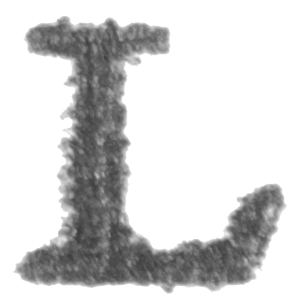 ocated on over 40 acres, the Museum is approximately 16 miles southwest of downtown St. Louis, on a site which includes one of the two first man-made railroad tunnels west of the Mississippi River. The Museum site also features more than four miles of switching and exhibition track. Additionally, the Museum houses a nationally acclaimed research library of transportation-related memorabilia and documents.
ocated on over 40 acres, the Museum is approximately 16 miles southwest of downtown St. Louis, on a site which includes one of the two first man-made railroad tunnels west of the Mississippi River. The Museum site also features more than four miles of switching and exhibition track. Additionally, the Museum houses a nationally acclaimed research library of transportation-related memorabilia and documents.
With over 70 locomotives, half of them "one-of-a-kind" or "sole survivors" of their type, the Museum has one of the most complete collections of American railroad motive power. Our collections of automobiles, buses, streetcars, aircraft, horse-drawn vehicles, and riverboat materials are constantly expanding to reflect the ever-changing nature of transportation.

 he National Museum of Transportation is a 42-acre private transportation museum in Kirkwood, Missouri, southwest of downtown St. Louis. Founded in 1944, the private museum restores, preserves, and displays a wide variety of transportation equipment spanning 15 decades of American history: cars, boats, aircraft, and in particular, locomotives and railroad equipment from around the United States. The museum houses a research library of transportation-related memorabilia and documents. The site includes more than 4 miles of switching and exhibition track, including an active interchange spur to the mainline of the Union Pacific Railroad is maintained, formerly with the Missouri Pacific Railroad. A miniature railroad operates around a loop of track near the parking lot and a full-sized restored trolley operates seasonally from April through October.
he National Museum of Transportation is a 42-acre private transportation museum in Kirkwood, Missouri, southwest of downtown St. Louis. Founded in 1944, the private museum restores, preserves, and displays a wide variety of transportation equipment spanning 15 decades of American history: cars, boats, aircraft, and in particular, locomotives and railroad equipment from around the United States. The museum houses a research library of transportation-related memorabilia and documents. The site includes more than 4 miles of switching and exhibition track, including an active interchange spur to the mainline of the Union Pacific Railroad is maintained, formerly with the Missouri Pacific Railroad. A miniature railroad operates around a loop of track near the parking lot and a full-sized restored trolley operates seasonally from April through October.

Click to see the National Museum of Transportation plotted on a Google Maps page
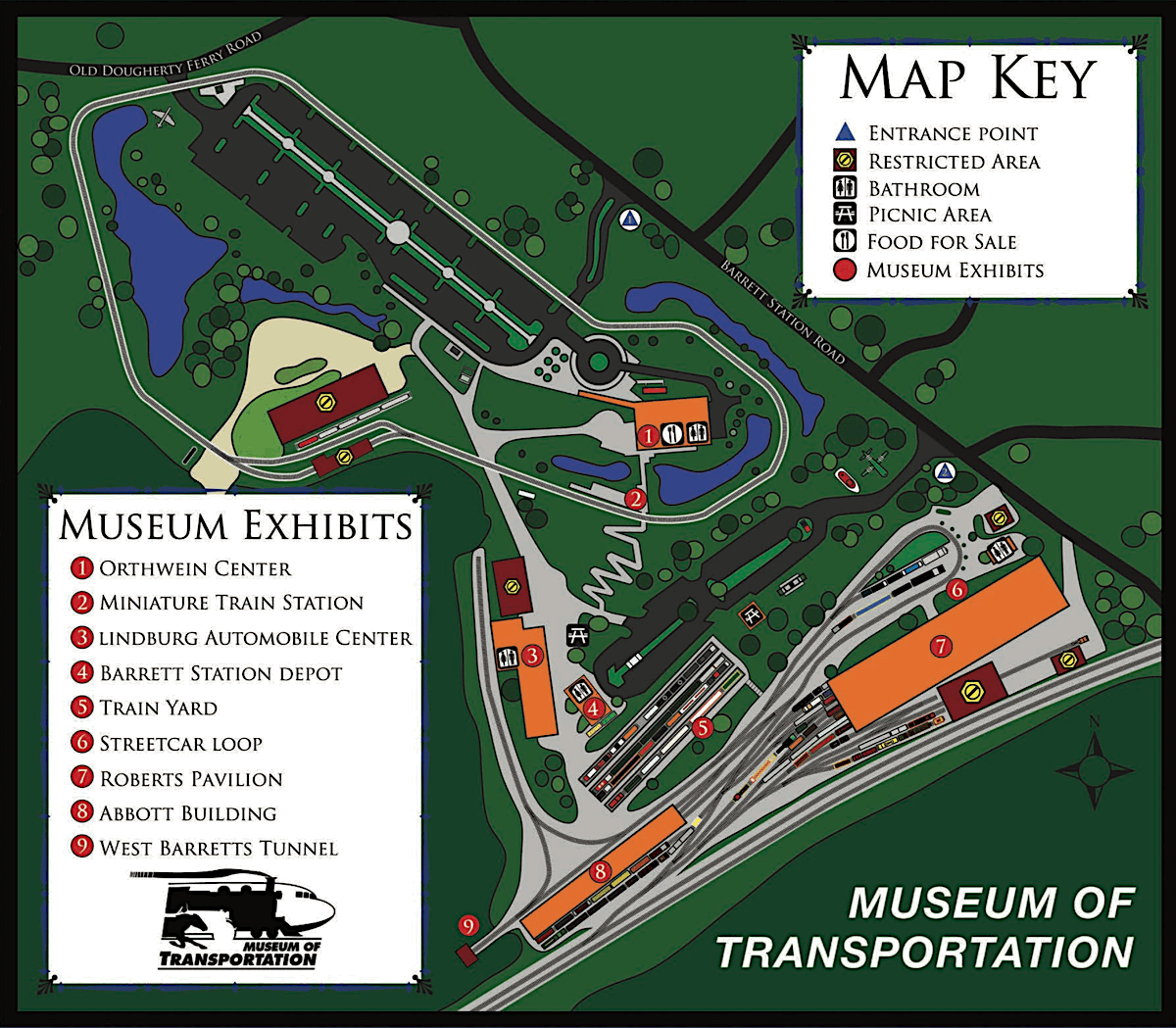
NMT grounds map / web
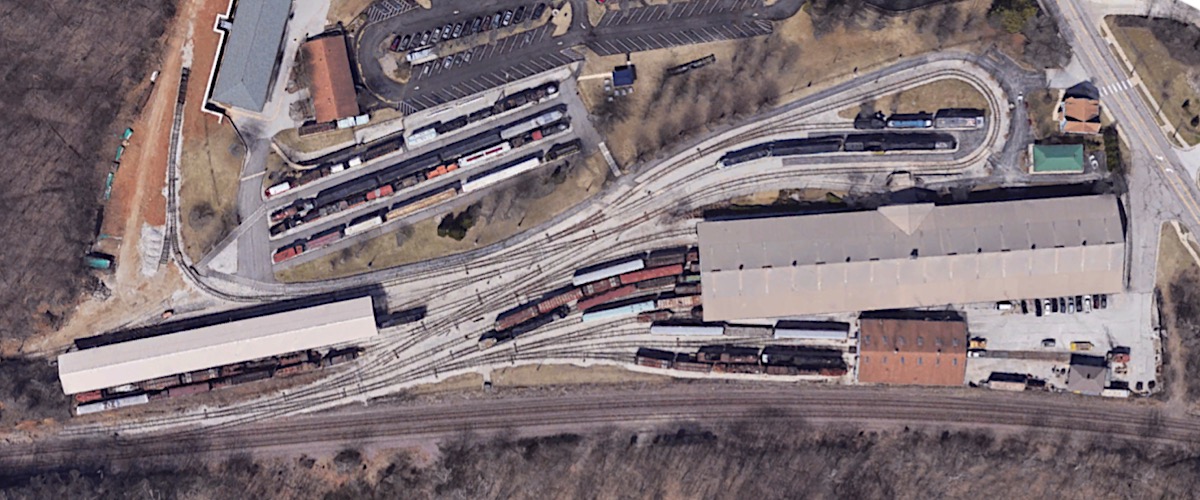
Rail yard overhead / Google Maps

Only a sampling of the museum's large collection is shown here, items of particular interest to HawkinsRails
Steam Locomotives
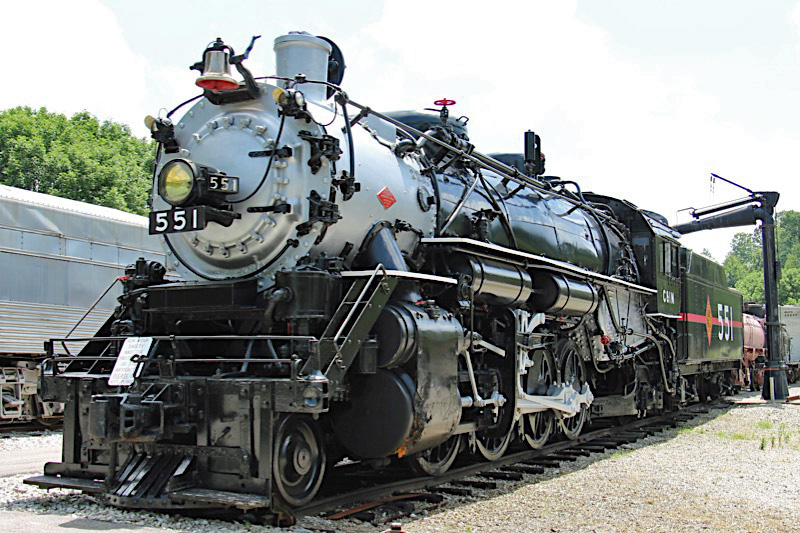
Chicago & Illinois Midland #551
Kirkwood, Mo / Jun 2018 / RWH


Chicago & Illinois Midland #551
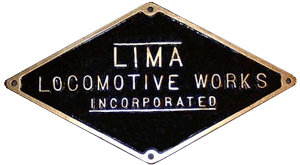

Jun 2018 / RWH
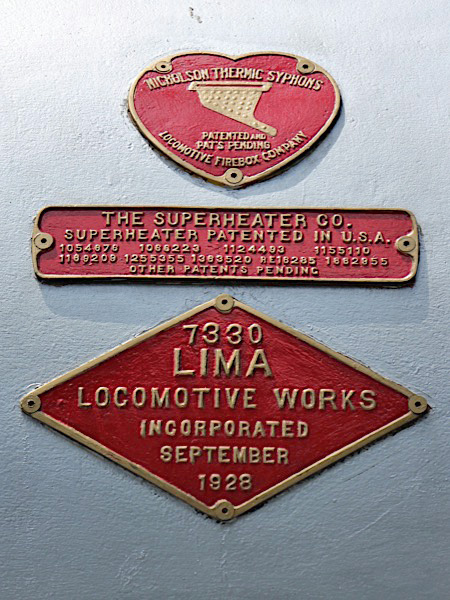
Jun 2018 / RWH
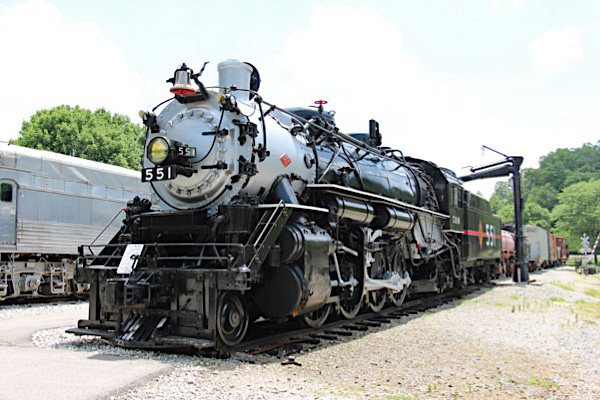
Kirkwood, Mo / Jun 2018 / RWH

Kirkwood, Mo / Jun 2018 / RWH
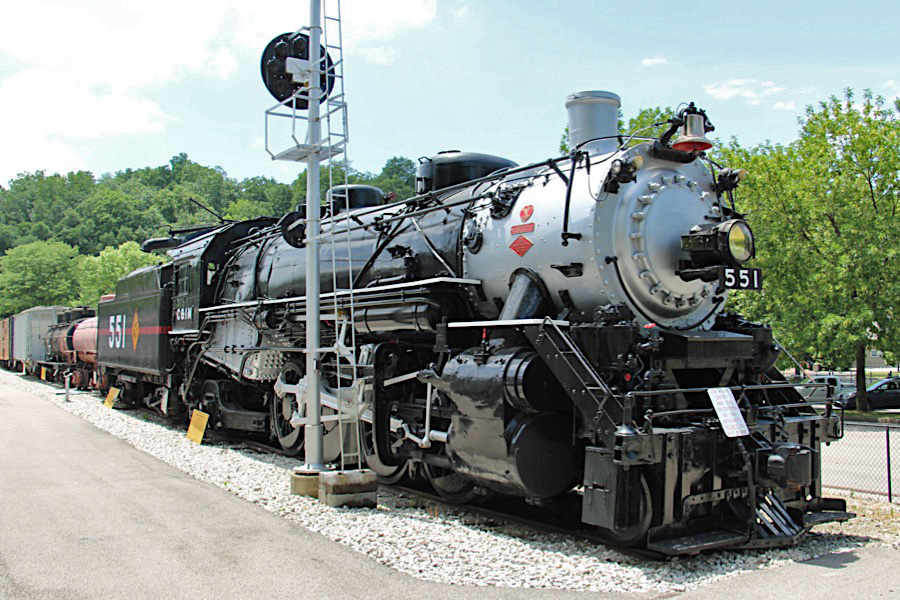
Kirkwood, Mo / Jun 2018 / RWH
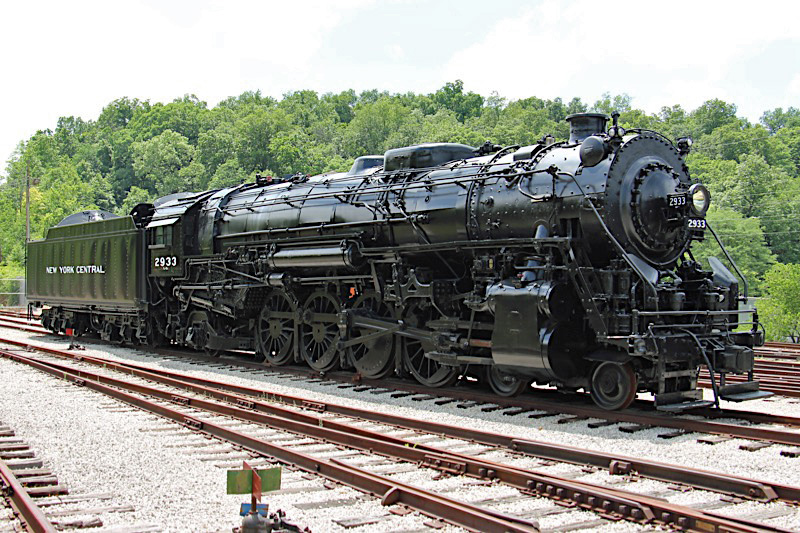
New York Central #2933
Kirkwood, Mo / Jun 2018 / RWH


New York Central #2933
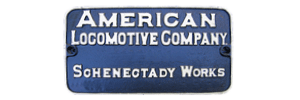

Jun 2018 / RWH
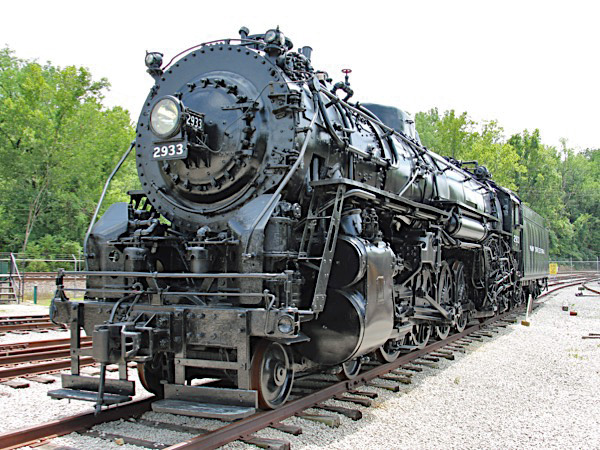
Kirkwood, Mo / Jun 2018 / RWH
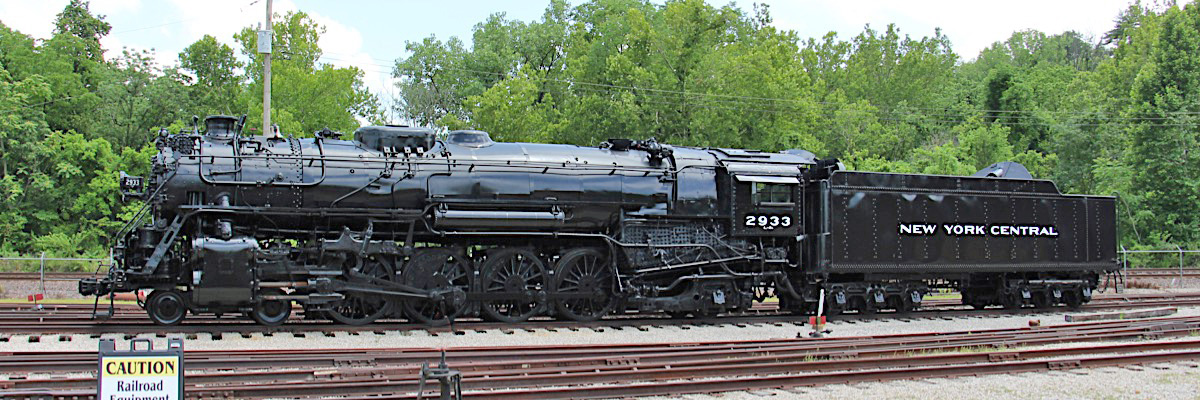
Kirkwood, Mo / Jun 2018 / RWH

Kirkwood, Mo / Jun 2018 / RWH
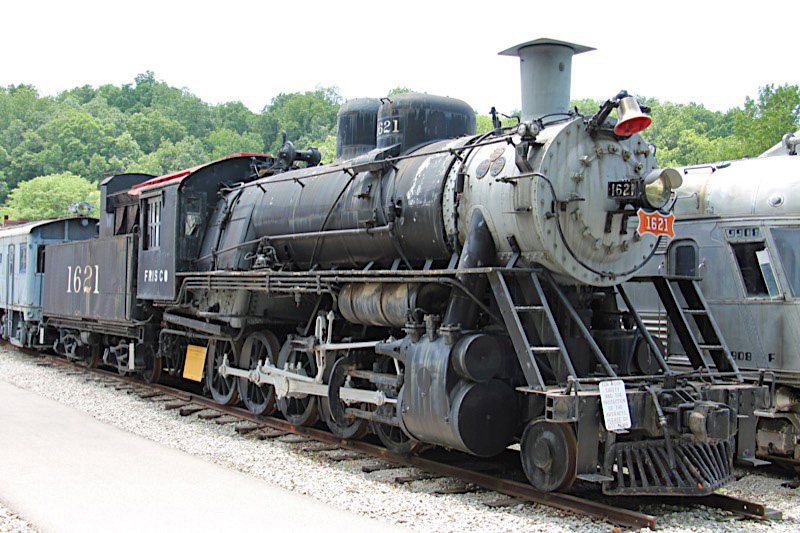
St. Louis-San Francisco #1621
Kirkwood, Mo / Jun 2018 / RWH


St. Louis-San Francisco #1621
ex Missouri-Kansas-Texas
ex Ft. Smith, Subiaco & Rock Island
ex Eagle-Picher
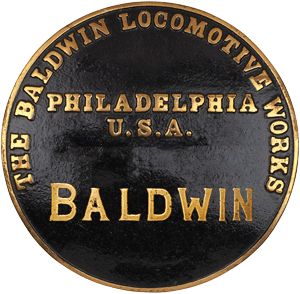
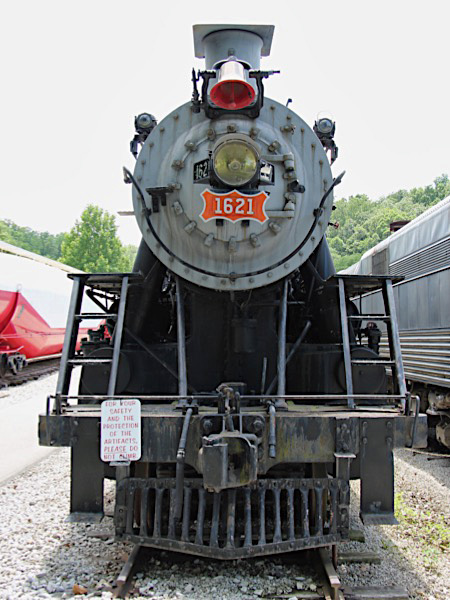
Jun 2018 / RWH

Kirkwood, Mo / Jun 2018 / RWH

Union Pacific #4006
Kirkwood, Mo / Jun 2018 / RWH


Union Pacific #4006
total weight 772,250 pounds


 The 4-8-8-4 wheel arrangement was unique to both the United States and to the Union Pacific Railroad. No other railroad and no other country made locomotives anything like these.
Many consider the 4-8-8-4s or "Big Boys" to be the largest steam locomotives ever built in the entire world. It would be hard to argue differently.
The 4-8-8-4 wheel arrangement was unique to both the United States and to the Union Pacific Railroad. No other railroad and no other country made locomotives anything like these.
Many consider the 4-8-8-4s or "Big Boys" to be the largest steam locomotives ever built in the entire world. It would be hard to argue differently.
When the Union Pacific created plans to have a locomotive designed that could haul 3,600 ton trains unassisted over the Wahsatch Mountains east of Ogden, UT, they had plans to give the name "Wahsatch" to this wheel arrangement. However, during the construction of the first of these locomotives, an ALCO machinist wrote the words "Big Boy" on the smokebox of the locomotive. The name stuck and became the name of this locomotive type.
ALCO built 25 of these locomotives for the Union Pacific at a cost of about $265,000 each. Based on inflation, the equivalent amount of money in 2018 would be $4,700,000 per locomotive.
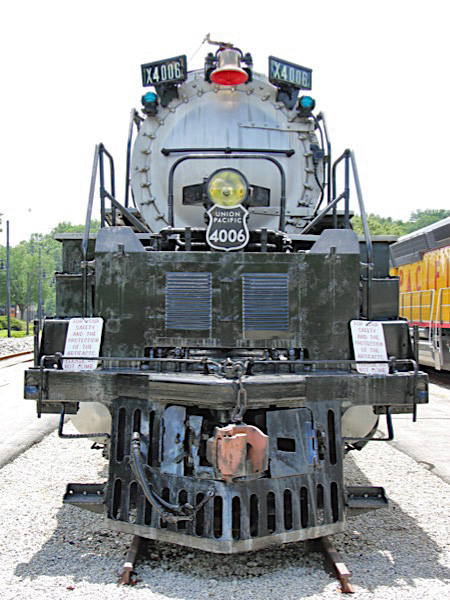
Jun 2018 / RWH
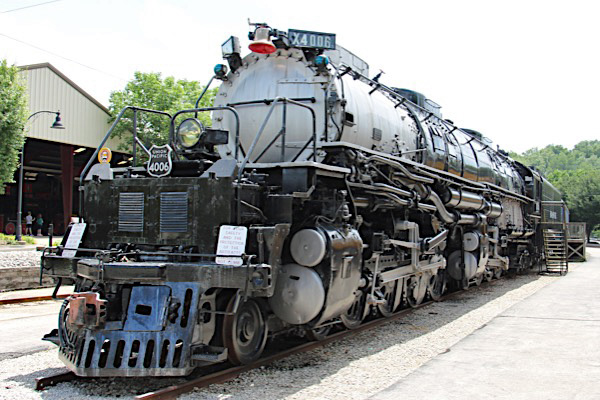
Kirkwood, Mo / Jun 2018 / RWH
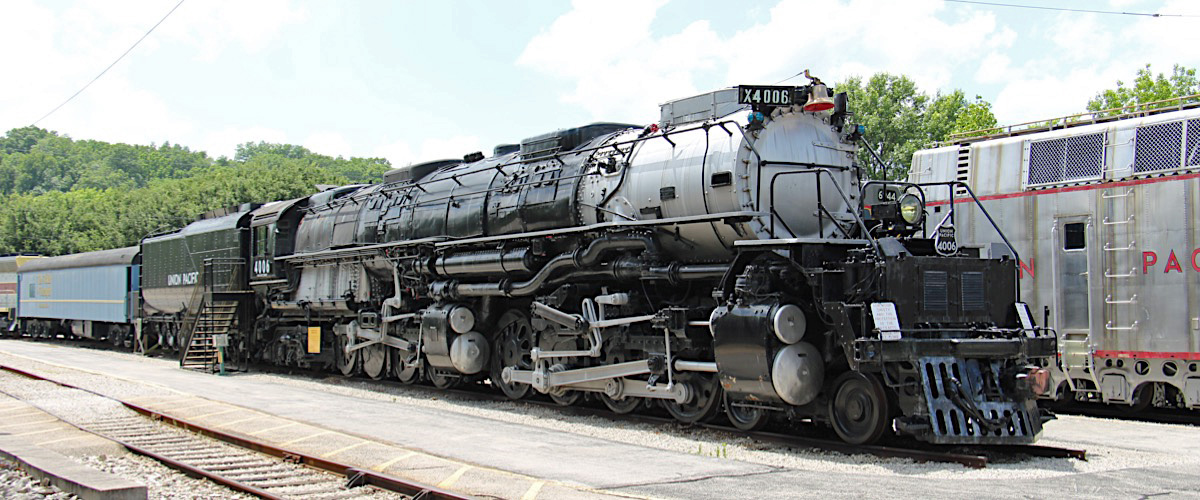
Kirkwood, Mo / Jun 2018 / RWH
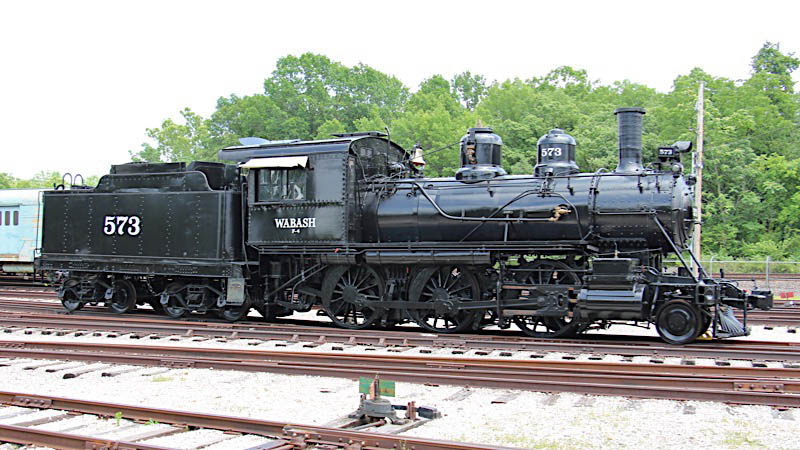
Wabash #573
Kirkwood, Mo / Jun 2018 / RWH


Wabash #573
Diesel Locomotives
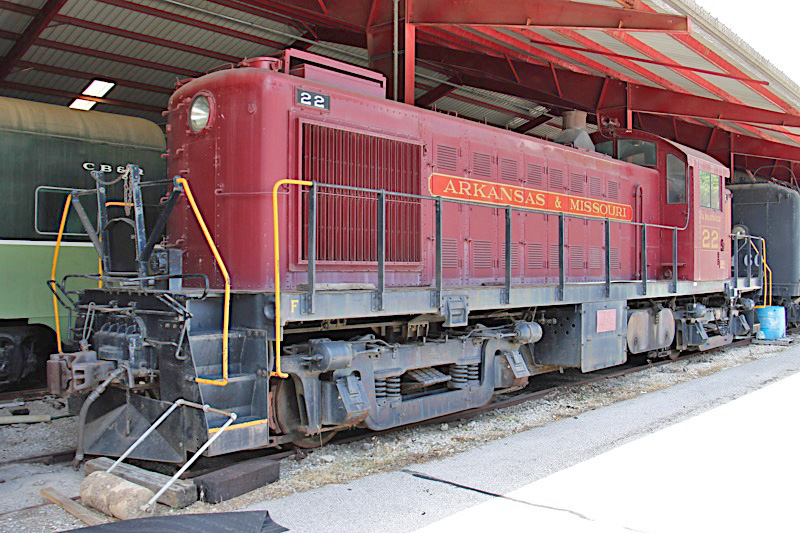
Arkansas & Missouri #22
Saint Louis, Mo / Jun 2018 / RWH


Arkansas & Missouri #22
to Maryland & Delaware #22
to Arkansas & Missouri #22
to National Museum of Transportation

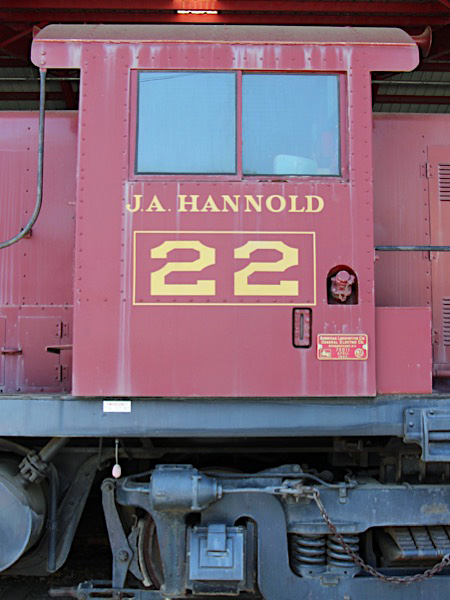
Jun 2018 / RWH
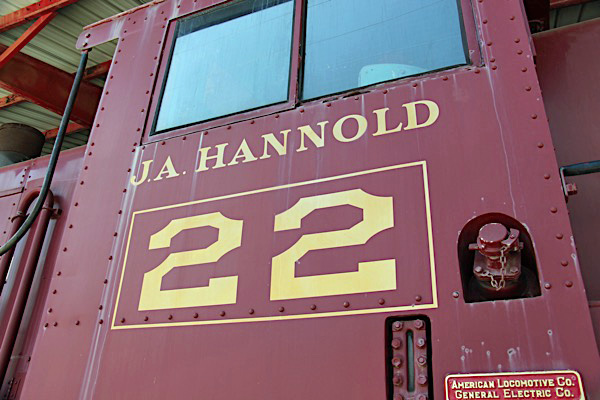
Saint Louis, Mo / Jun 2018 / RWH
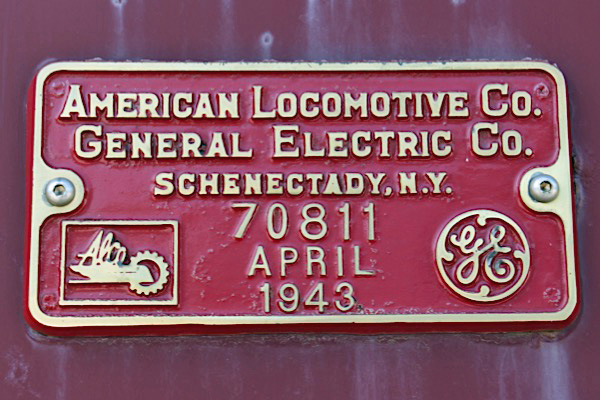
RWH
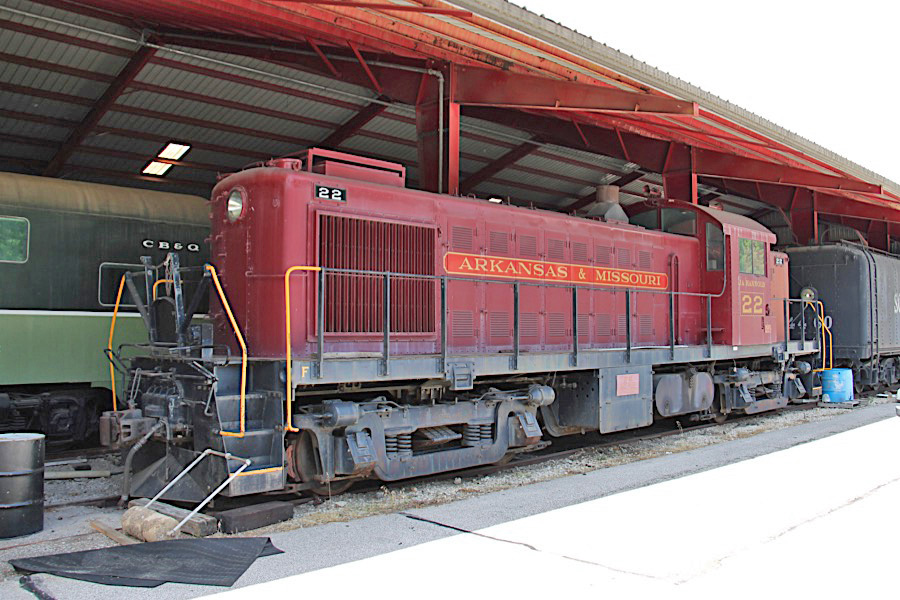
Saint Louis, Mo / Jun 2018 / RWH

See also our complete Arkansas & Missouri roster scrapbook in Shortlines
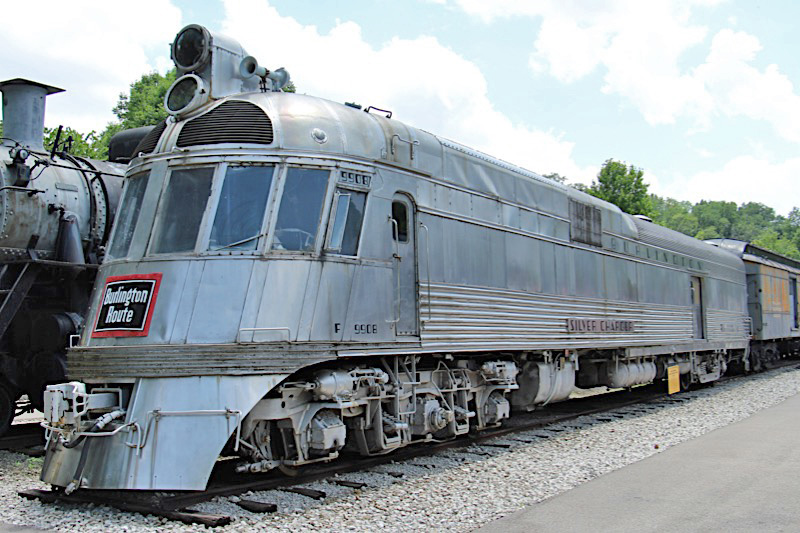
Chicago, Burlington & Quincy #9908 “Silver Charger”
Kirkwood, Mo / Jun 2018 / RWH


Chicago, Burlington & Quincy #9908 “Silver Charger”

The General Pershing Zephyr was the ninth of the Chicago, Burlington and Quincy Railroad's Zephyr streamliners, and the last built as an integrated streamliner rather than a train hauled by an EMD E-unit diesel locomotive. It was constructed in 1939 with bodywork and passenger cars by Budd Company and diesel engine, electric transmission, power truck, and other locomotive equipment by General Motors Electro-Motive Corporation. Because its intended Kansas City, Missouri to St. Louis, Missouri route passed near the birthplace and boyhood home of famous World War I General John J. Pershing, the train was named after him. The power car was named Silver Charger, after Pershing's horse Charger, while the passenger cars were named after U.S. Army badges of rank — Silver Leaf, Silver Eagle, and Silver Star.
The power car, 9908 Silver Charger, was unique. It utilised a single new EMC 567 V-12 engine developing 1,000 hp, rather than the pair used in the contemporary EMC E3. It had one Martin Blomberg-designed E-unit A1A passenger truck at the front, with powered outer axles and a center idler axle, and an unpowered trailing truck, giving it the unusual wheel arrangement of A1A-2. This made it mechanically half of an E3. The back half of the power car was a baggage area. This made it similar to special power-baggage units built by EMD for the Colorado Springs section of the Chicago, Rock Island and Pacific "Rocky Mountain Rocket", though the latter had a carbody and E-3/E-6 styling by EMD. The "Silver Charger" was the last power unit built by Budd with the unique "Zephyr / Flying Yankee" shovelnose styling.
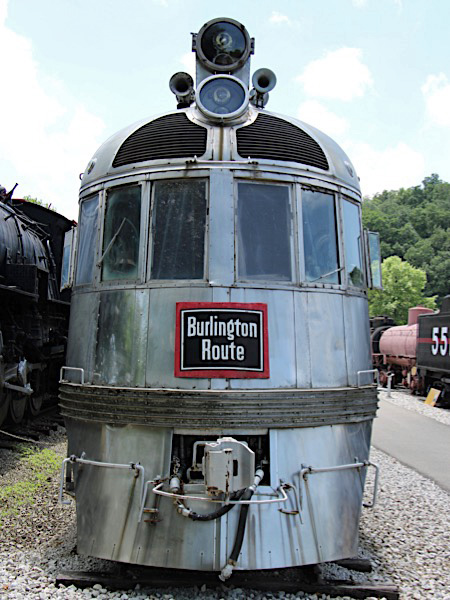
Jun 2018 / RWH
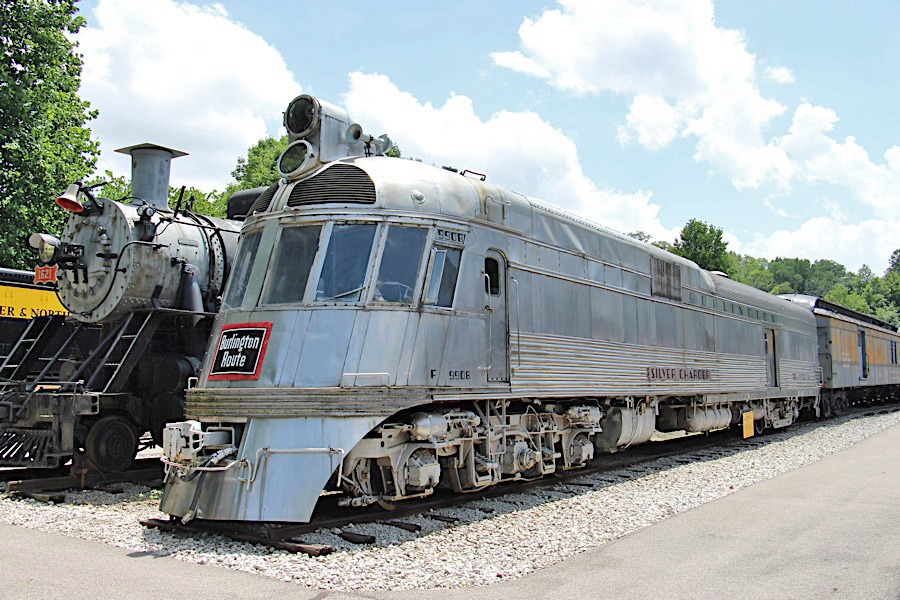
Kirkwood, Mo / Jun 2018 / RWH
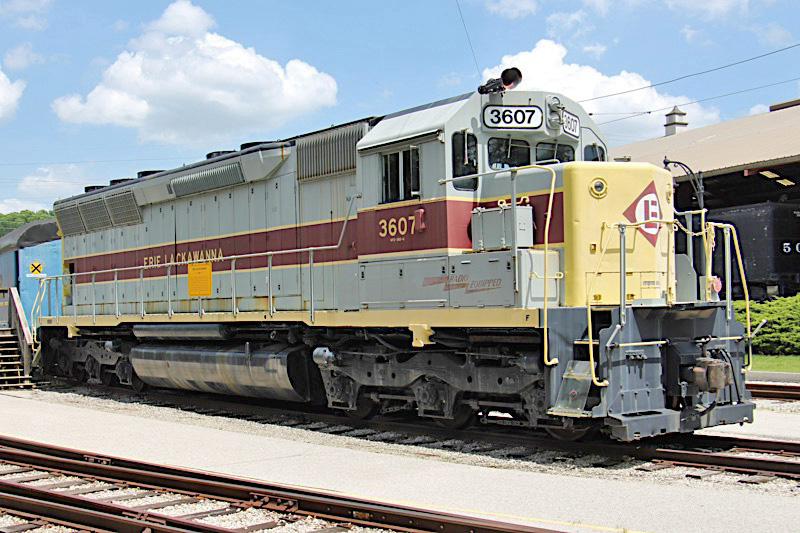
Erie-Lackawanna #3607
Kirkwood, Mo / Jun 2018 / RWH


Erie-Lackawanna #3607
to Conrail #6072
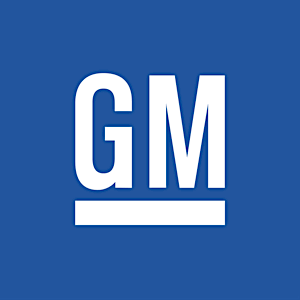
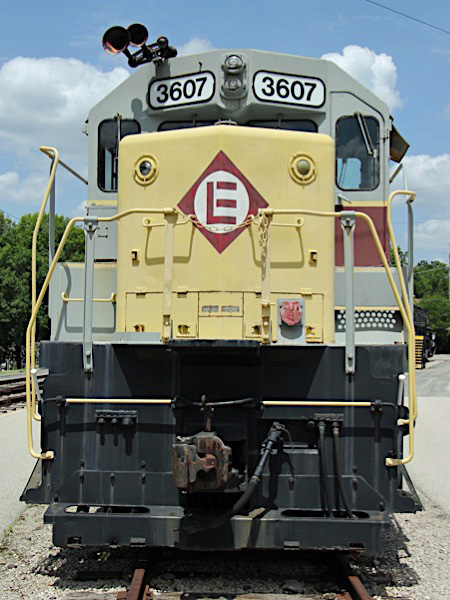
Jun 2018 / RWH
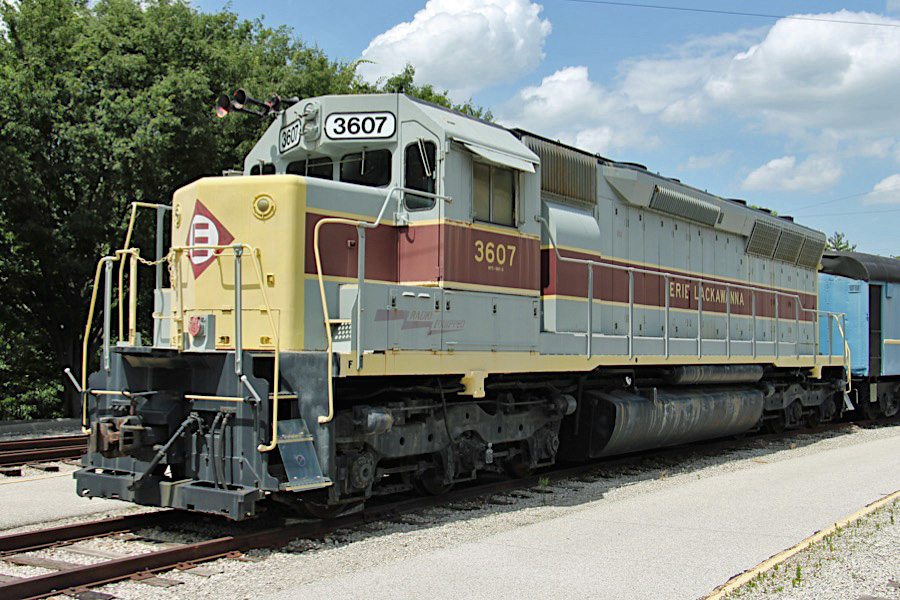
Kirkwood, Mo / Jun 2018 / RWH
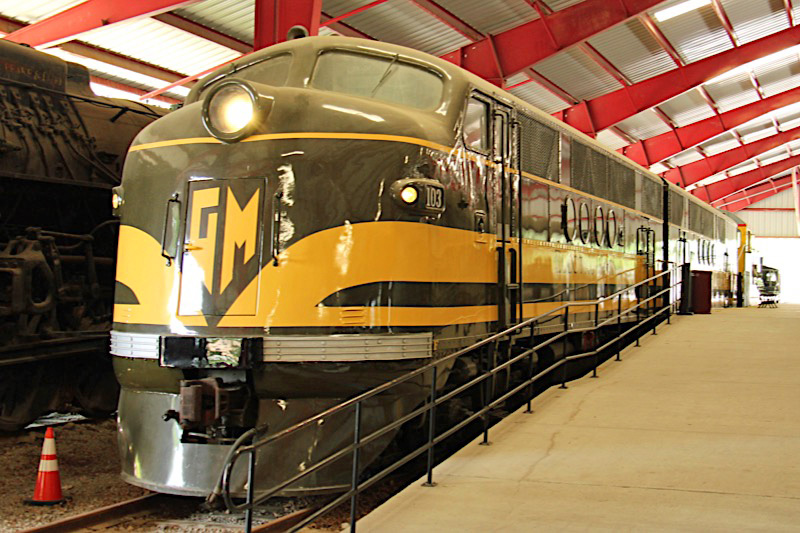
General Motors #103
Kirkwood, Mo / Jun 2018 / RWH


General Motors #103

 The EMD FT is a 1,350-horsepower (1,010 kW) diesel-electric locomotive that was produced between March 1939 and November 1945, by General Motors' Electro-Motive Corporation (EMC), later known as GM Electro-Motive Division (EMD). The "F" stood for Fourteen Hundred (1400) horsepower (rounded from 1350) and the "T" for Twin, as it came standard in a two-unit set. The design was developed from the TA model built for the C,RI&P in 1937, and was similar in cylinder count, axle count, length and layout. All told 555 cab-equipped "A" units were built, along with 541 cabless booster or "B" units, for a grand total of 1,096 units. The locomotives were all sold to customers in the United States. It was the first model in EMD's very successful F-unit series of cab unit freight diesels, and was the locomotive that convinced many U.S. railroads that the diesel-electric freight locomotive was the future. Many rail historians consider the FT one of the most important locomotive models of all time.
The EMD FT is a 1,350-horsepower (1,010 kW) diesel-electric locomotive that was produced between March 1939 and November 1945, by General Motors' Electro-Motive Corporation (EMC), later known as GM Electro-Motive Division (EMD). The "F" stood for Fourteen Hundred (1400) horsepower (rounded from 1350) and the "T" for Twin, as it came standard in a two-unit set. The design was developed from the TA model built for the C,RI&P in 1937, and was similar in cylinder count, axle count, length and layout. All told 555 cab-equipped "A" units were built, along with 541 cabless booster or "B" units, for a grand total of 1,096 units. The locomotives were all sold to customers in the United States. It was the first model in EMD's very successful F-unit series of cab unit freight diesels, and was the locomotive that convinced many U.S. railroads that the diesel-electric freight locomotive was the future. Many rail historians consider the FT one of the most important locomotive models of all time.
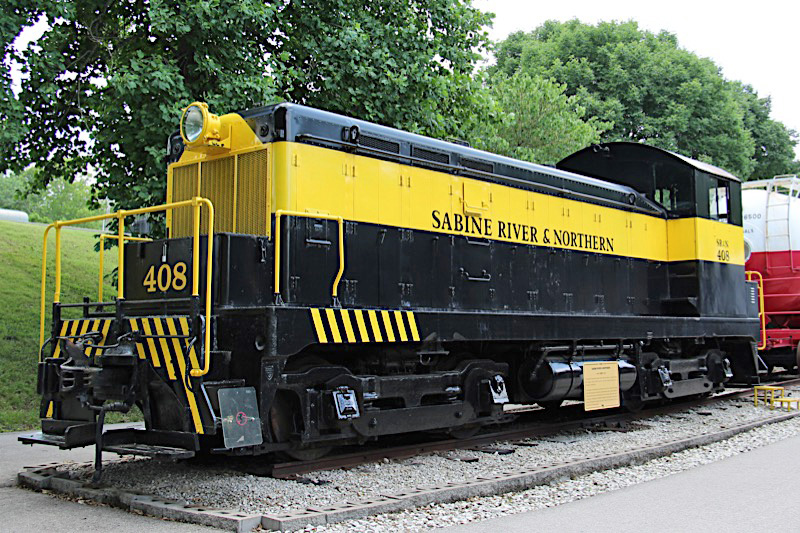
Sabine River & Northern #408
Kirkwood, Mo / Jun 2018 / RWH


Sabine River & Northern #408
cast frame instead of welded
to Elgin, Joliet & Eastern #408
to Marinette, Tomahawk & Western #408
to Sabine River & Northern #408

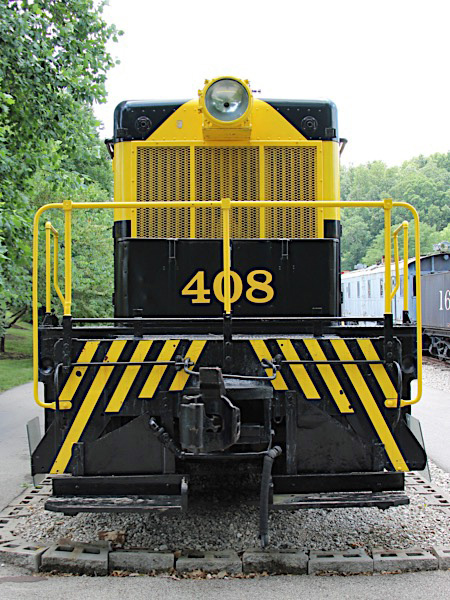
Jun 2018 / RWH
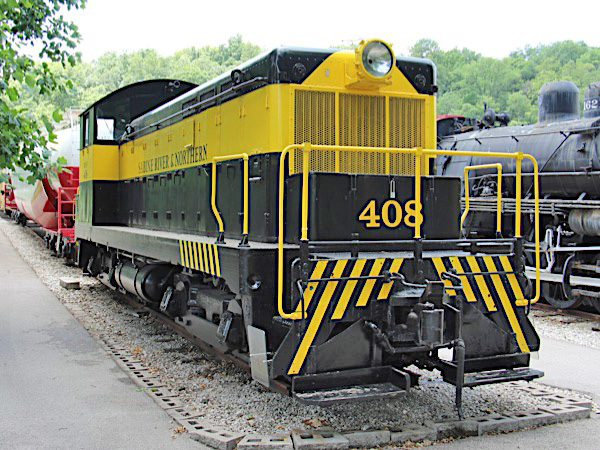
Kirkwood, Mo / Jun 2018 / RWH
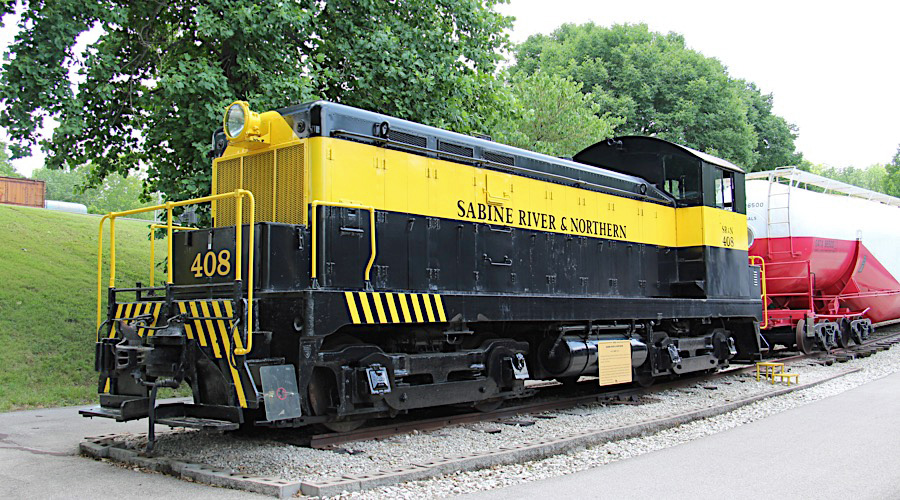
Kirkwood, Mo / Jun 2018 / RWH
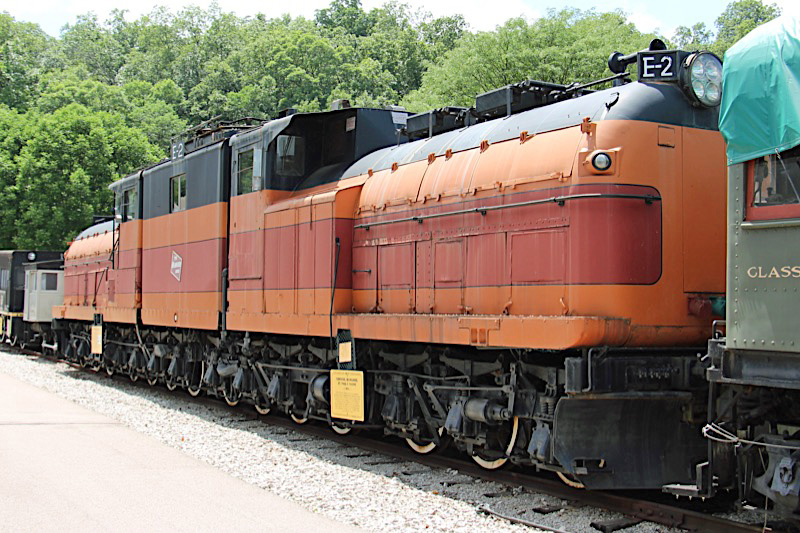
Chicago, Milwaukee, St. Paul & Pacific #E-2
Kirkwood, Mo / Jun 2018 / RWH


Chicago, Milwaukee, St. Paul & Pacific #E-2

 The Milwaukee Road's class EP-2 comprised five electric locomotives built by General Electric in 1919. They were often known as Bipolars, which referred to the bipolar electric motors they used. Among the most distinctive and powerful electric locomotives of their time, they epitomized the modernization of the Milwaukee Road. They came to symbolize the railroad during their nearly 40 years of use, and remain an enduring image of mainline electrification.
The Milwaukee Road's class EP-2 comprised five electric locomotives built by General Electric in 1919. They were often known as Bipolars, which referred to the bipolar electric motors they used. Among the most distinctive and powerful electric locomotives of their time, they epitomized the modernization of the Milwaukee Road. They came to symbolize the railroad during their nearly 40 years of use, and remain an enduring image of mainline electrification.
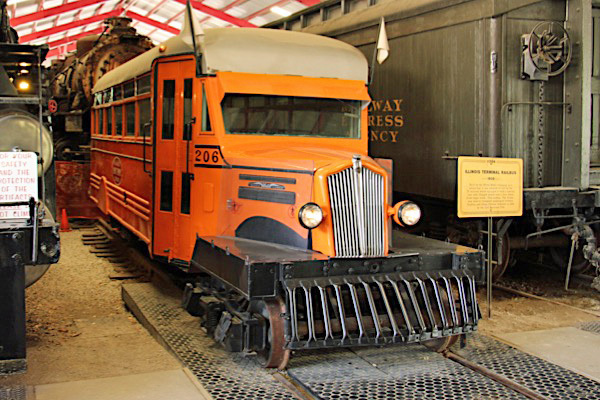
Illinois Terminal #206
Kirkwood, Mo / Jun 2018 / RWH


Illinois Terminal #206
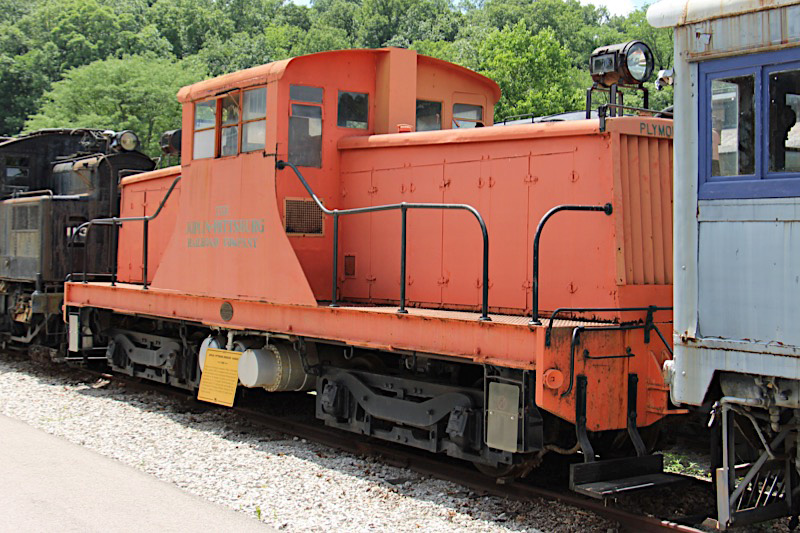
Joplin-Pittsburg #2003
Kirkwood, Mo / Jun 2018 / RWH


Joplin-Pittsburg #2003
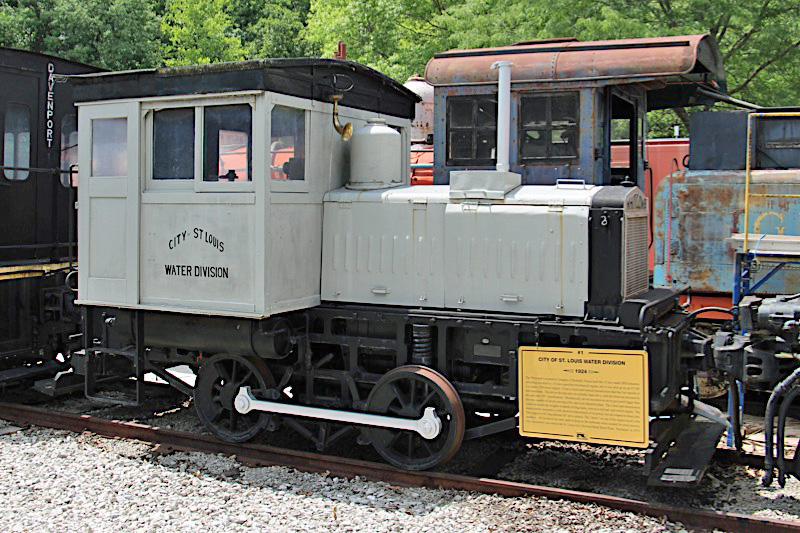
St. Louis Water Division #1
Kirkwood, Mo / Jun 2018 / RWH


St. Louis Water Division #1
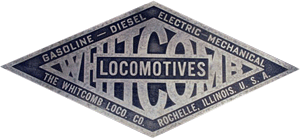
Rolling Stock
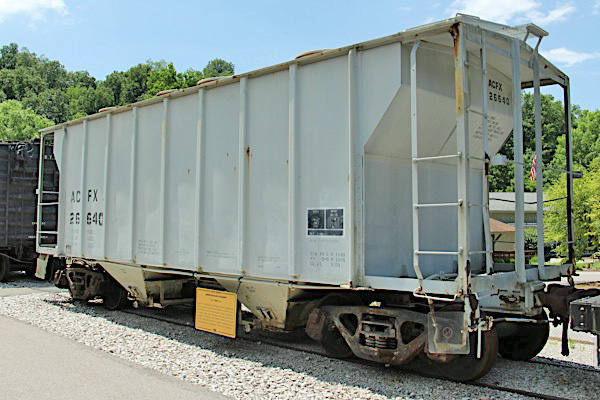
American Car & Foundry #26640
covered hopper (1960) / Kirkwood, Mo / Jun 2018 / RWH
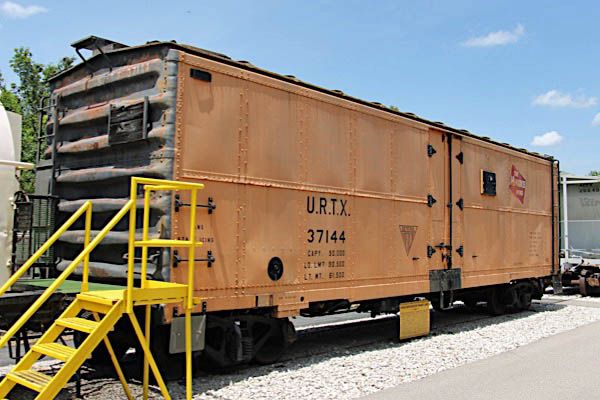
Union Refrigerator Transit Lines #37144
refrigerator car (1948) / Kirkwood, Mo / Jun 2018 / RWH
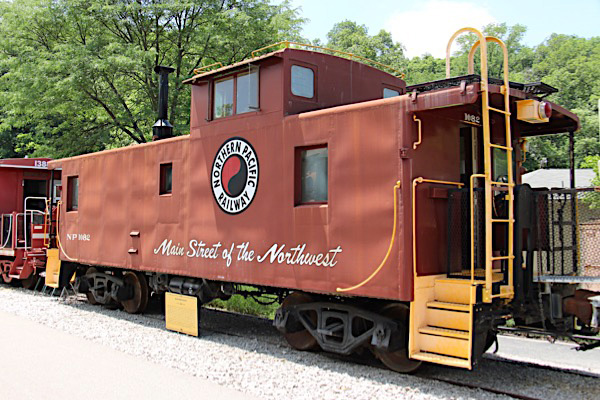
Northern Pacific #1082
caboose (1948) / Kirkwood, Mo / Jun 2018 / RWH
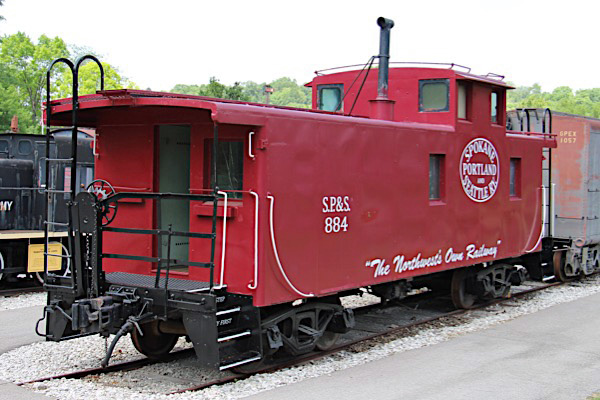
Spokane, Portland & Seattle #884
caboose (1954) / Kirkwood, Mo / Jun 2018 / RWH
Miniature Railroad
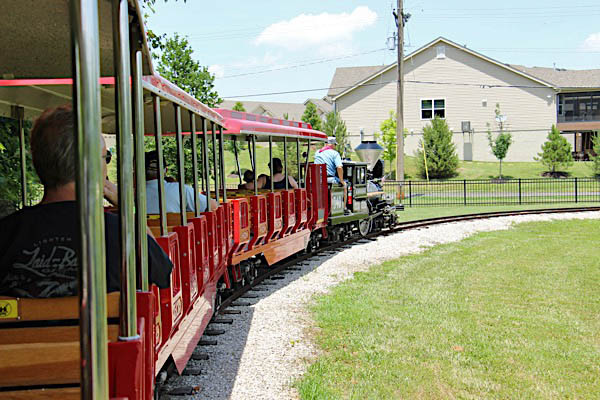
Kirkwood, Mo / Jun 2018 / RWH

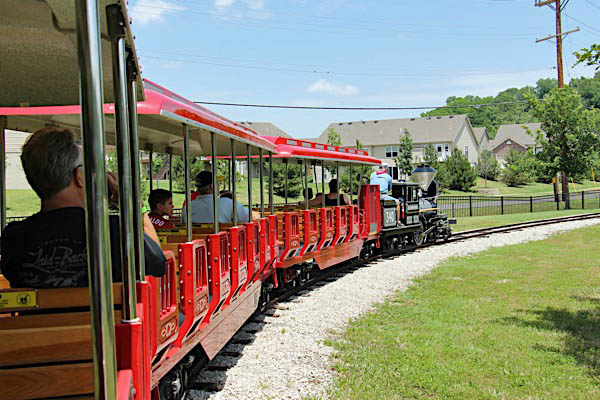
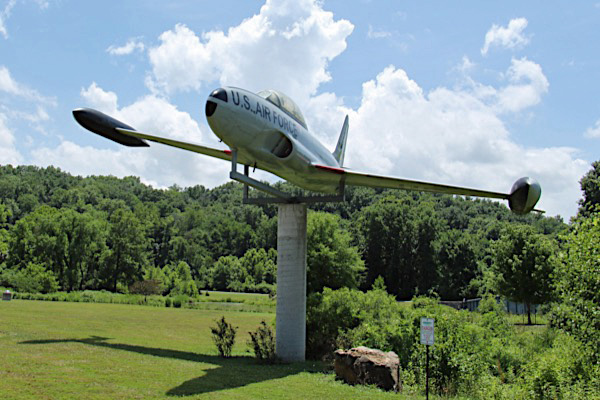
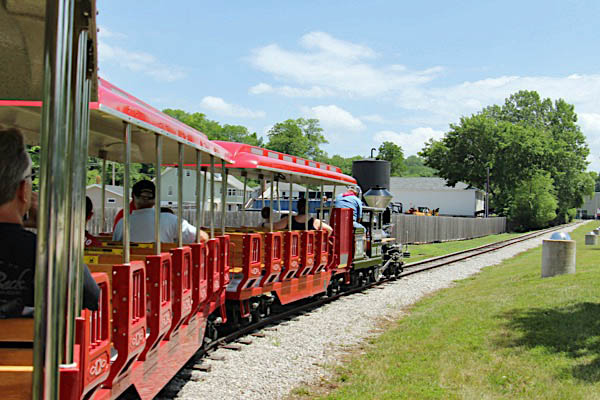
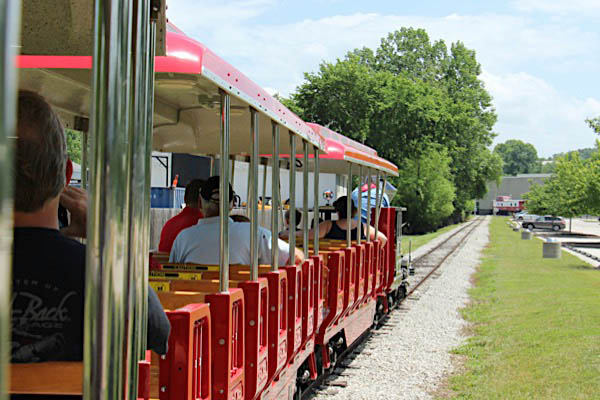
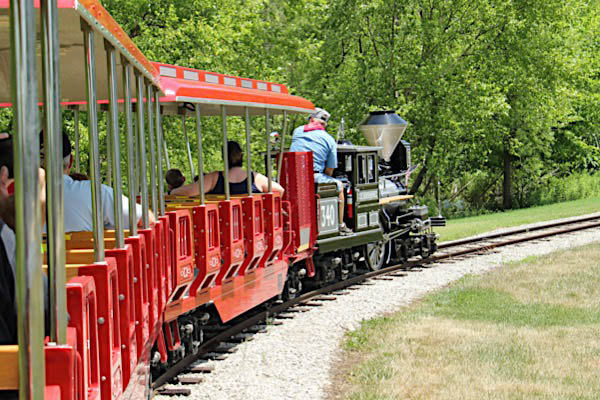
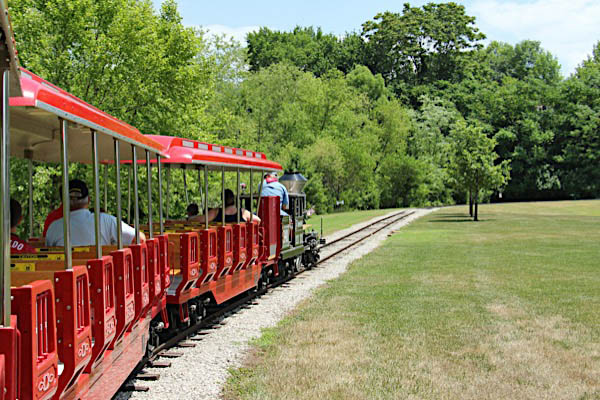
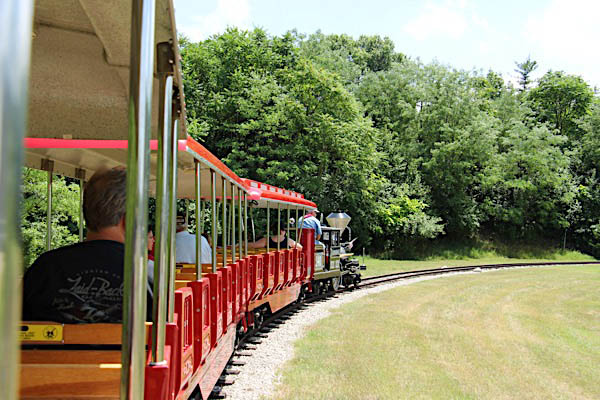
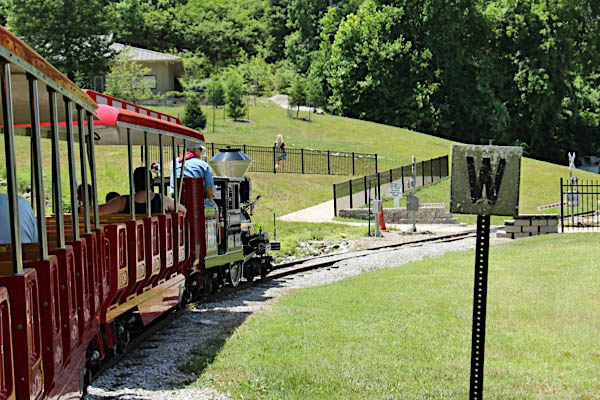
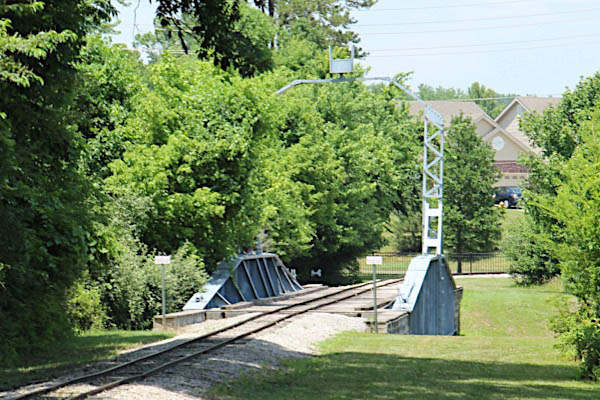
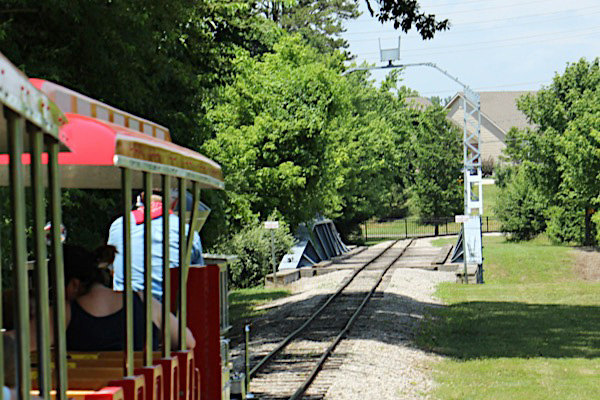

Kirkwood, Mo / Jun 2018 / RWH
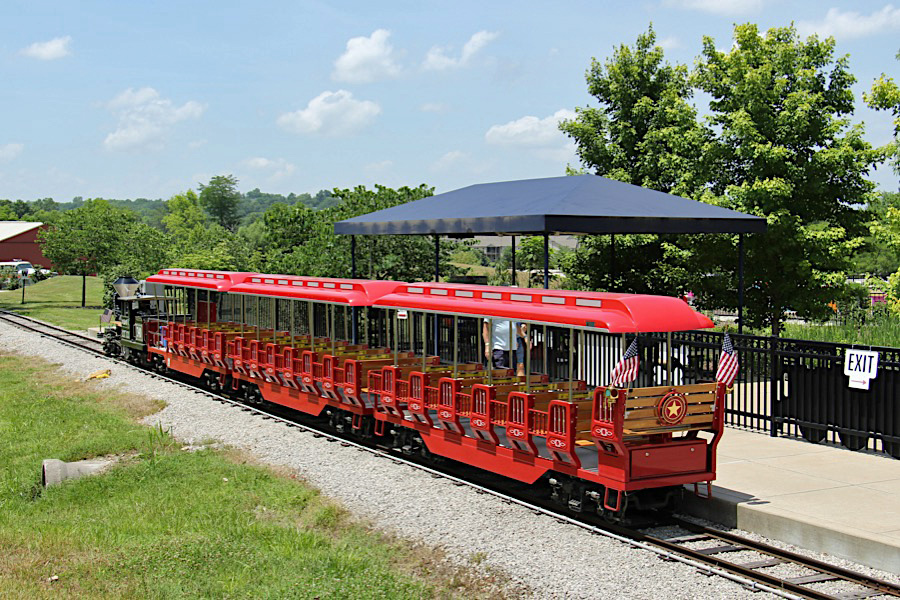
Kirkwood, Mo / Jun 2018 / RWH
 Snapshots
Snapshots
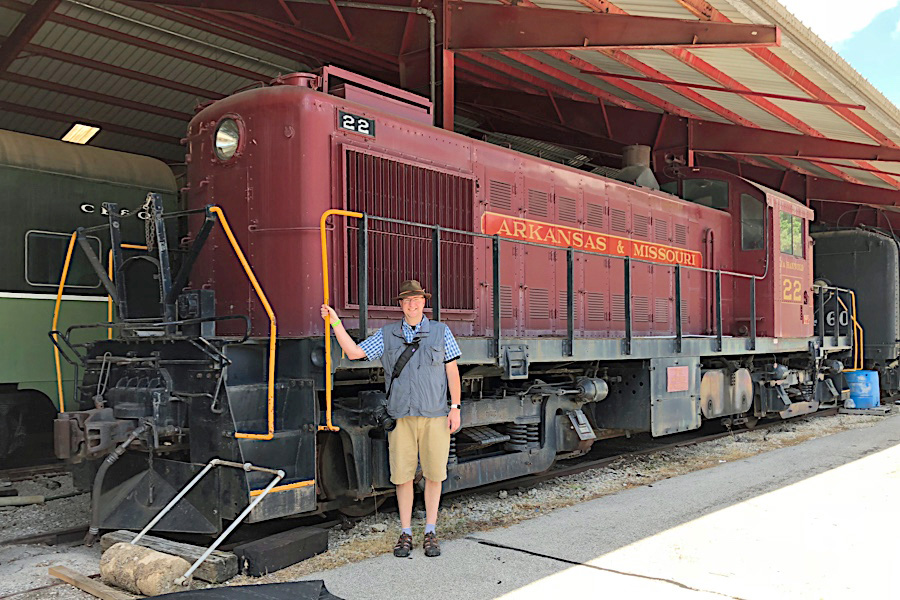
Kirkwood, Mo / Jun 2018 / DKT
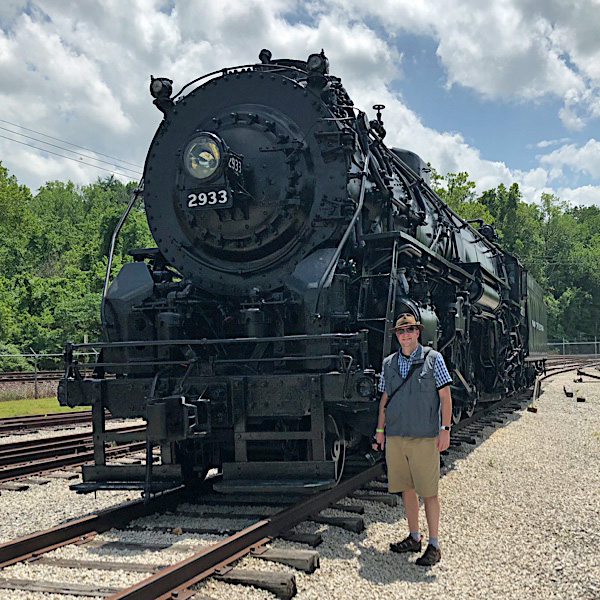
Kirkwood, Mo / Jun 2018 / DKT
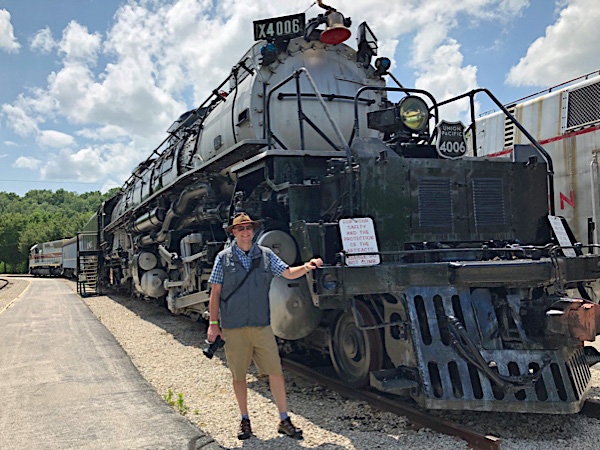
Kirkwood, Mo / Jun 2018 / DKT
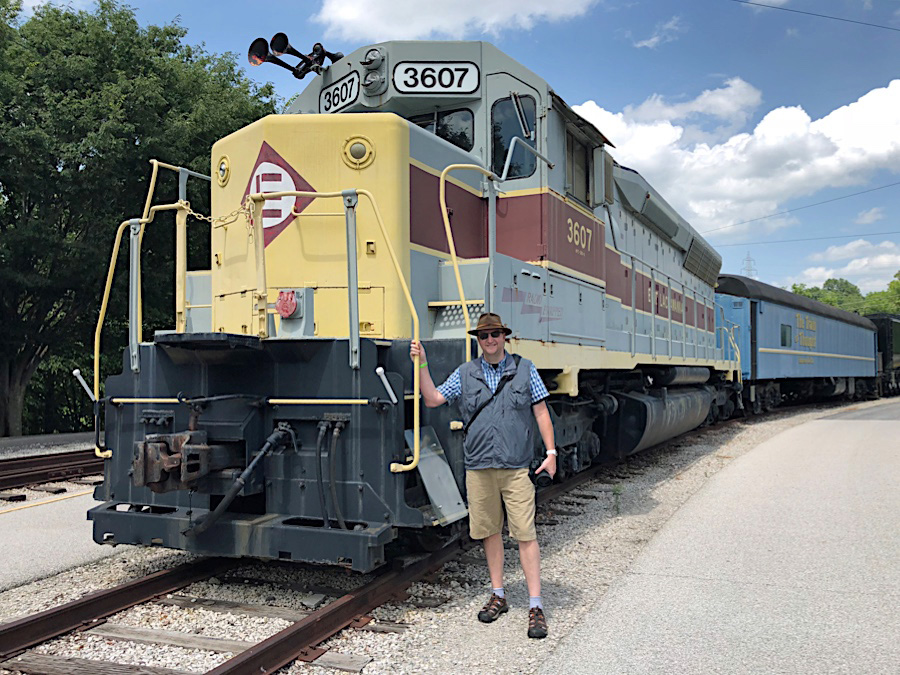
Kirkwood, Mo / Jun 2018 / DKT
Links / Sources
- National Museum of Transportation website
- Wikipedia article for National Museum of Transportation
- SteamLocomotive.com Surviving Steam Locomotives in Missouri
- Diesel Shop diesel-electric roster for National Museum of Transportation

